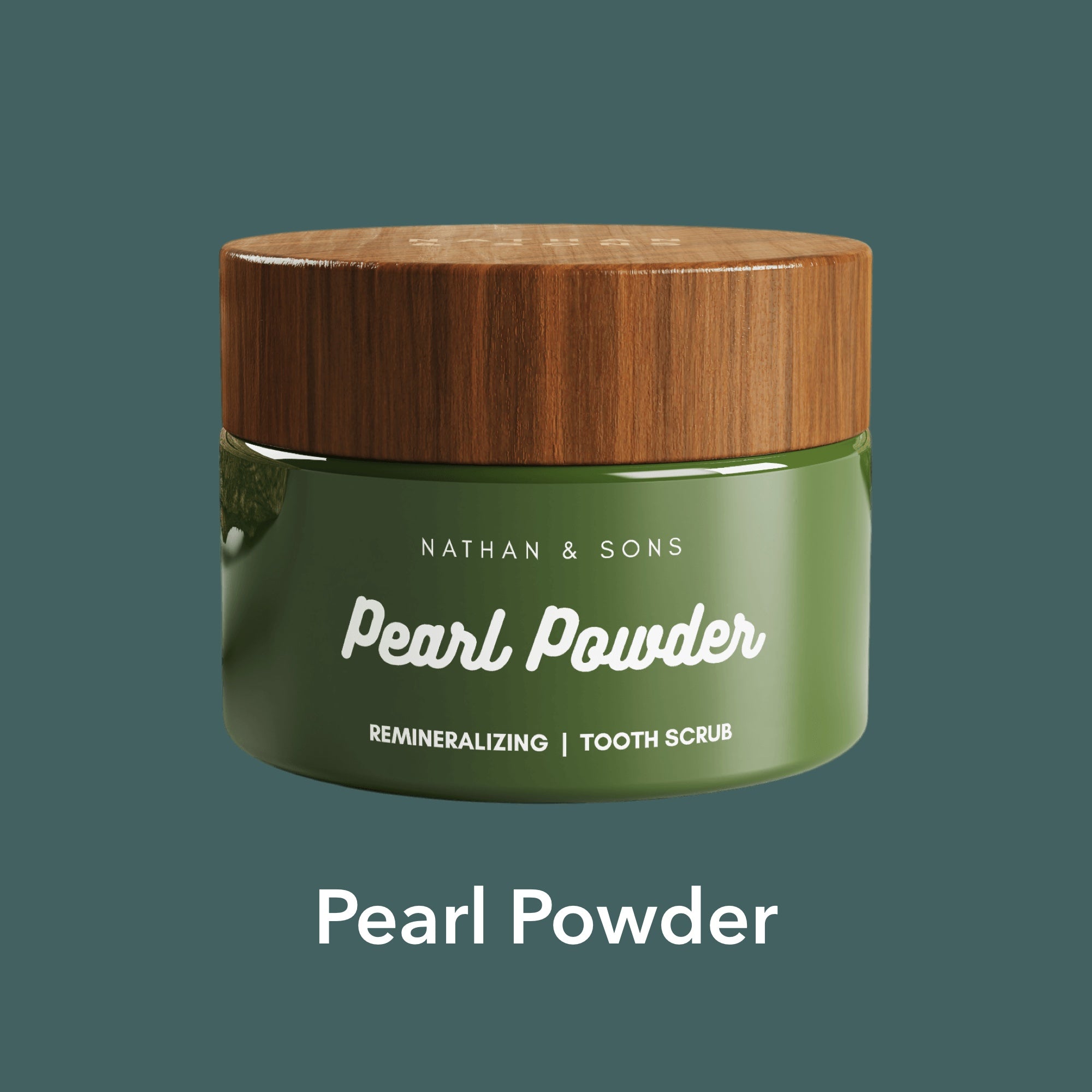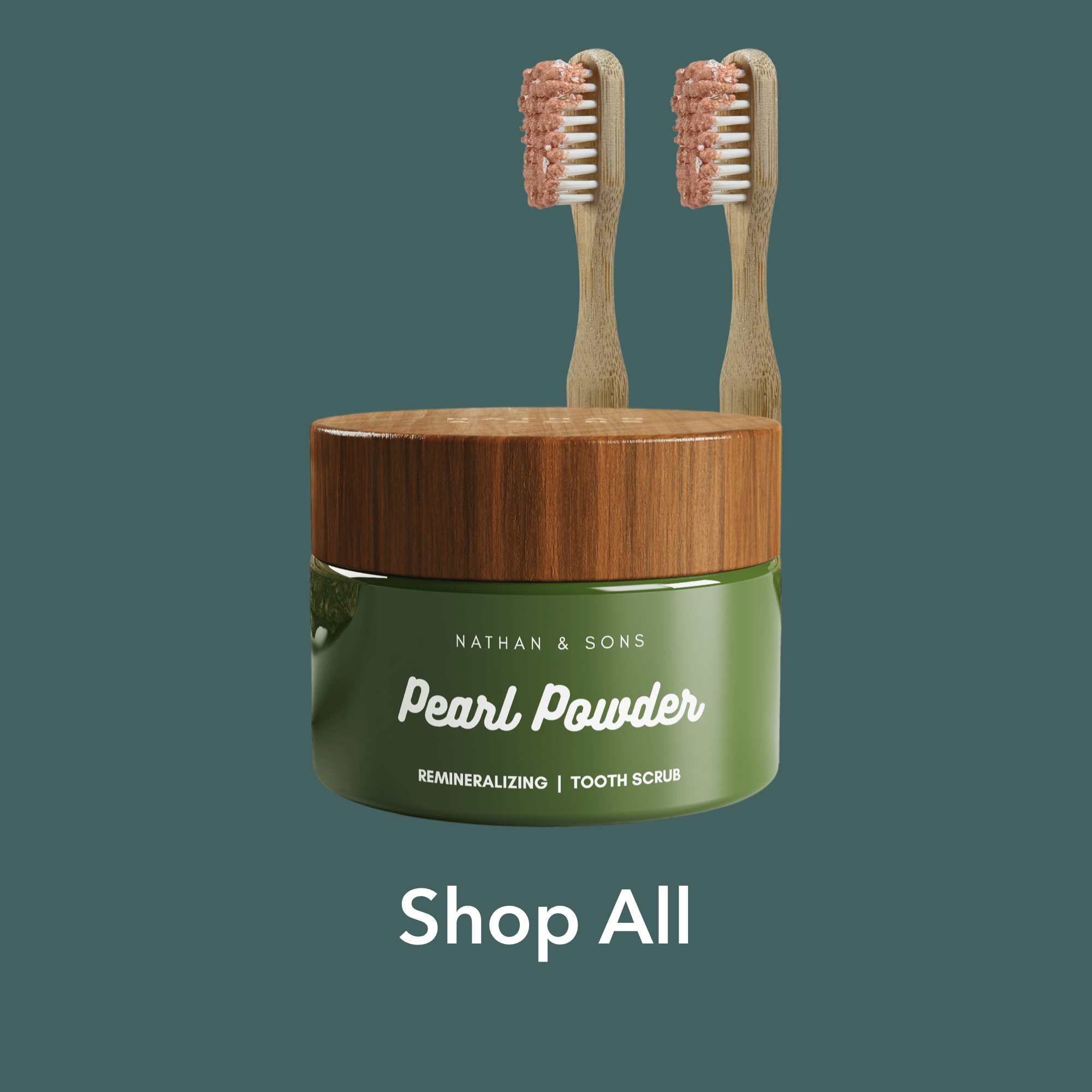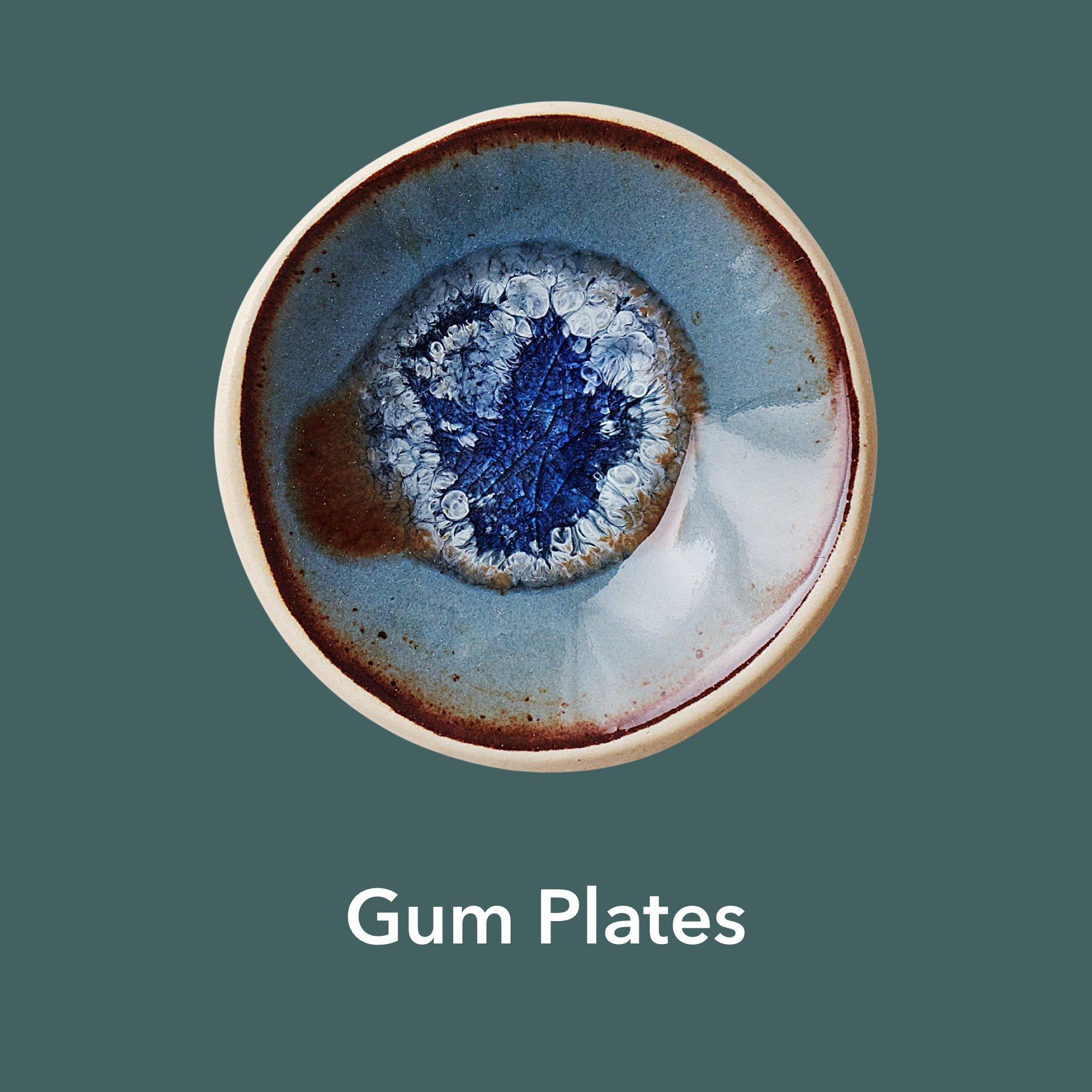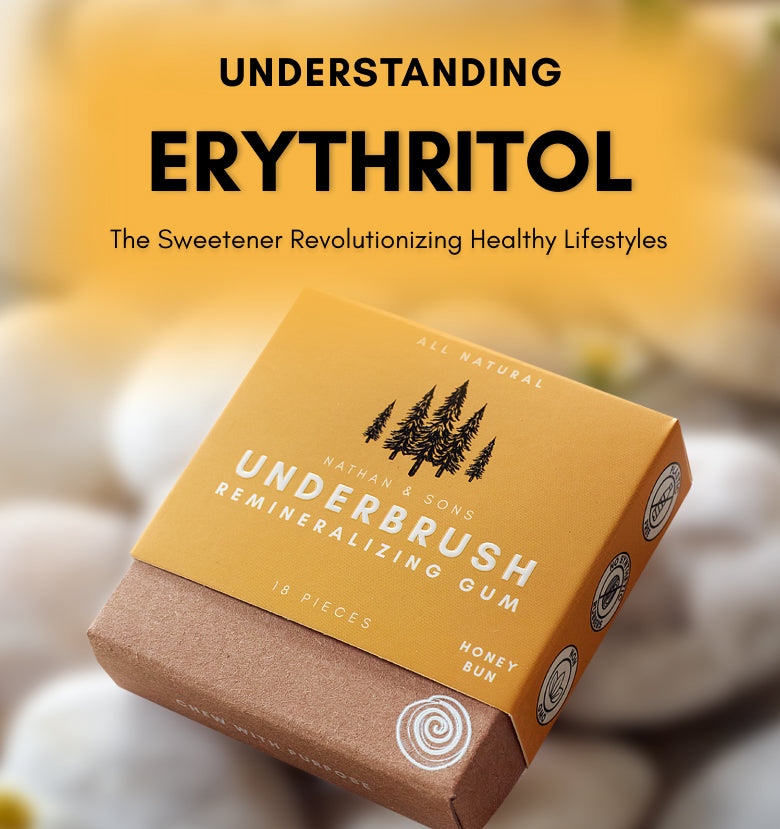Tooth remineralizing gum is changing how people think about oral care. It’s more than just a way to freshen your breath… it’s a modern approach to protecting your enamel. This simple habit can help strengthen your teeth, reduce sensitivity, and naturally rebuild the minerals lost every day from eating, drinking, and brushing.
What Is Tooth Remineralizing Gum?
Tooth remineralizing gum is a type of functional chewing gum made with ingredients that help restore minerals to your enamel. While regular gum only helps produce saliva, this kind of gum actively supports enamel repair. It’s a sugar-free product formulated to reverse enamel loss, targeting demineralized spots where acids from food and bacteria have eroded the surface.
The main ingredient that makes it work is hydroxyapatite… the same mineral that gives teeth their strength and hardness. As you chew, these minerals interact with your saliva and reattach to the tooth surface, rebuilding areas weakened by acid erosion or wear. Often available in mint or fruit flavors, it’s not candy… it’s functional care that reduces plaque and sensitivity between brushes.
Why Your Teeth Need Remineralization
Every day, acids from food, drinks, and bacteria cause your enamel to lose minerals… a process known as demineralization. Over time, that leads to sensitivity, dullness, or even cavities. Your body can restore some of these minerals naturally through saliva, but not completely, especially with high-sugar diets or dry mouth from medications.
Tooth remineralizing gum helps fill the gap by giving your mouth a steady supply of enamel-strengthening minerals while balancing the pH that protects against further damage. Your teeth endure constant acid attacks, leaving surfaces weak and prone to cavities if unchecked. This gum steps in to restore balance, supplying essential minerals to redeposit into enamel and repair micro-damage.
What It’s Made Of
At its core, tooth remineralizing gum features hydroxyapatite… the mineral composing 97 percent of enamel. This bio-identical compound bonds directly to teeth for genuine repair.
Supporting elements include:
- Xylitol: A natural sweetener that fights cavity-causing bacteria and ramps up saliva.
- Calcium and phosphate: Essential for mineral redeposition.
- Gum base from natural saps: Like mastic or chicle for texture without synthetics.
- Natural flavors: Mint or herbal oils for a clean, refreshing taste.
- Plant-based binders: Often used in cleaner formulations for plastic-free, eco-friendly products.
These create a clean, plastic-free chew. Look for at least one gram of xylitol per piece to maximize benefits. Hydroxyapatite: The enamel-strengthening mineral that restores tooth structure. Xylitol: A natural sweetener that prevents plaque and supports remineralization.
How Tooth Remineralizing Gum Works
Tooth remineralizing gum harnesses your saliva to kickstart enamel repair. Chewing triggers a surge in saliva production, which naturally buffers acids and carries minerals to teeth. As you chew, saliva mixes with these particles, allowing essential minerals to redeposit on your teeth.
Step by step:
- Chewing Increases Saliva Flow – This neutralizes acids that wear away enamel and washes away debris.
- Hydroxyapatite Delivers Minerals – Nano-sized particles bind to tiny enamel pores, strengthening and repairing them.
- Xylitol Reduces Bacteria – Xylitol, a natural sweetener, prevents acid-producing bacteria from sticking to teeth, creating an alkaline environment.
- Daily Use Builds Results – Consistency helps rebuild enamel strength and prevent sensitivity. Over time, this builds a tougher barrier against wear.
For saliva science, see the American Dental Association’s page on chewing gum at https://www.ada.org/resources/ada-library/oral-health-topics/chewing-gum.
The Science Behind Tooth Remineralization
Scientific studies confirm that hydroxyapatite is safe, biocompatible, and highly effective for restoring enamel. Research published in BDJ Open and Frontiers in Oral Health shows that nano-hydroxyapatite can increase enamel microhardness by up to 35% and significantly reduce bacterial adhesion.
Hydroxyapatite acts as a biomimetic mineral… meaning it mimics the structure of natural tooth enamel. Instead of coating your teeth with chemicals, it physically integrates with them, helping smooth and fill early microscopic damage. Decades of research validate this, with a 2023 Journal of Pharmacy & Bioallied Sciences review noting 30-35 percent hardness gains and 40 percent less bacterial adhesion.
Xylitol’s role is clear too. The 2015 Cochrane Review, with 2025 updates, links it to fewer cavities via microbiome shifts. A Nutrients study showed xylitol gums enhance oral health markers. PubMed trials confirm xylitol with funoran and calcium remineralizes subsurface lesions in days. BDJ Open comparisons favor hydroxyapatite over fluoride for sensitivity relief. Frontiers in Public Health data supports kid-friendly formulas.
Key Clinical Insights
Controlled studies measure real gains. One saw 35 percent enamel boost in weeks. Another highlighted sorbitol-xylitol blends hardening demineralized surfaces faster than paraffin. PMC research on three gums showed superior remineralization versus controls.
Tooth remineralizing gum with CPP-ACP from milk proteins counters erosion effectively, per dental analyses. Studies also show chewing gum with xylitol promotes enamel repair. One trial found xylitol gum with added calcium sped up subsurface lesion healing in just seven days. Participants wore dental appliances, and results beat plain gum or sugar versions.
Another study tested sorbitol and xylitol blends on demineralized enamel. Hardness jumped significantly, proving tougher teeth against wear. The ADA backs sugar-free gum for its saliva boost. More flow means more calcium and phosphate to plug enamel gaps. Xylitol starves cavity-causing bacteria too, cutting acid attacks by up to 40 percent.
A 2023 review found that xylitol gum prevents tooth decay more effectively than other polyols and supports steady remineralization over time. New findings reported in 2025 support this conclusion, showing that regular xylitol gum use reduces harmful oral bacteria.
These results prove tooth remineralizing gum delivers on enamel protection, especially for early-stage wear, aligning with guidelines from authoritative bodies like the ADA.
Key Benefits of Tooth Remineralizing Gum
Tooth remineralizing gum multitasks for your mouth. It neutralizes post-meal acids, easing erosion from sodas or fruits. Sensitivity drops as enamel rebuilds, letting you enjoy ice cream worry-free. Plaque removal leads to whiter, smoother teeth and fresher breath.
For dry mouth, it hydrates naturally. Long-term, cavity risk falls, and eco-options align with sustainable living.
These advantages keep smiles bright and visits to the dentist shorter.
Why It’s Different from Regular Gum
Standard gum boosts saliva and cleans lightly, but skips minerals. Tooth remineralizing gum actively rebuilds with hydroxyapatite, turning passive chewing into targeted therapy. It’s health-focused, not just flavorful… regular gum freshens breath and helps produce saliva, but it doesn’t add minerals back into your teeth.
How to Choose and Use Tooth Remineralizing Gum Effectively
Prioritize gums listing hydroxyapatite and xylitol clearly. UnderBrush Mastic Mint offers natural saps for plaque removal.
Usage tips:
- Chew 1-2 pieces post-meal for 10-20 minutes.
- Up to four times daily, starting gradual.
- Pair with fluoride brushing and cheese snacks for synergy.
- Store cool to preserve potency. Continue for at least 10–15 minutes to allow minerals to absorb. Use consistently to see improvement in enamel strength and smoothness.
Dentists track progress via x-rays. Adjust for high-risk needs. Store away from heat to preserve ingredient integrity.
Potential Downsides of Tooth Remineralizing Gum
Safe for most, but excess chewing strains jaws… cap at recommended doses. Xylitol might upset stomachs if swallowed heavily.
Birch-allergic? Choose synthetic versions. It handles early issues, not advanced decay… consult pros then.
Diabetics and pregnant users: Moderation is key, with doctor approval. Yes. It’s made from naturally derived ingredients like hydroxyapatite and xylitol. Nathan and Sons' remineralizing gum is fluoride-free and safe for both adults and children.
FAQs
* What sets tooth remineralizing gum apart from regular gum?
It adds hydroxyapatite for repair and xylitol for bacteria control, beyond basic freshening. This duo rebuilds enamel actively.
* Does tooth remineralizing gum replace brushing?
No… it enhances between sessions. Full routines with floss and paste remain essential, per ADA guidelines. It’s a supplement to regular brushing and flossing, not a replacement. It supports your enamel between brushings.
* How quickly do results show from tooth remineralizing gum?
Sensitivity eases in 2-3 weeks; full strength in 1-3 months. Consistency drives gains, trials confirm. Many users notice smoother, cleaner teeth within two to four weeks of daily chewing.
* Is tooth remineralizing gum okay for kids?
Yes, over five with supervision. Fluoride-free formulas like those with HA suit young teeth safely.
* Do dentists endorse tooth remineralizing gum?
Absolutely… many praise hydroxyapatite as a natural enamel ally, especially for prevention.
* Is tooth remineralizing gum safe for everyone?
Yes. It’s made from naturally derived ingredients like hydroxyapatite and xylitol. Most products are fluoride-free and safe for both adults and children.
* Does it prevent cavities?
Yes, indirectly. By restoring enamel minerals and reducing bacteria, tooth remineralizing gum lowers the risk of new cavity formation.
Final Thoughts: Level Up with Tooth Remineralizing Gum
Tooth remineralizing gum redefines simple oral care… a chew that rebuilds, protects, and refreshes. Science from hydroxyapatite bonding to xylitol’s bacterial curb makes it reliable for enamel health. Tooth remineralizing gum is one of the easiest ways to protect and strengthen your teeth naturally. Backed by dental science and powered by hydroxyapatite and xylitol, it offers an effective, fluoride-free solution for daily enamel care. Whether you struggle with sensitivity, want to improve enamel strength, or simply prefer clean, natural ingredients, tooth remineralizing gum delivers real, noticeable results.
Grab UnderBrush remineralizing gum today and integrate after snacks. Blend with brushing for peak protection. Your stronger smile awaits… schedule a checkup to celebrate the change and tailor it to your needs.
References
- Pushpalatha C, et al. Nanohydroxyapatite in dentistry… a comprehensive review. Journal of Pharmacy & Bioallied Sciences 2023.https://pmc.ncbi.nlm.nih.gov/articles/PMC10562112/
- Pepla E, et al. Nano-hydroxyapatite and its applications in preventive dentistry… a review. International Journal of Nanomedicine 2014. https://pmc.ncbi.nlm.nih.gov/articles/PMC4252862/
- O’Hagan-Wong K, et al. The use of hydroxyapatite toothpaste to prevent dental caries. BDJ Open 2021. https://pmc.ncbi.nlm.nih.gov/articles/PMC8930857/
- Amaechi BT, et al. Comparative efficacy of a hydroxyapatite and a fluoride toothpaste in promoting remineralization. BDJ Open 2019. https://www.nature.com/articles/s41405-019-0026-8
- Paszynska E, et al. Caries-preventing effect of a hydroxyapatite toothpaste in children. Frontiers in Public Health 2023. https://www.frontiersin.org/journals/public-health/articles/10.3389/fpubh.2023.1199728/full
- Naim J, et al. The remineralizing and desensitizing potential of hydroxyapatite in dentistry. Review 2025. https://www.mdpi.com/2079-4983/16/9/325
- Florea AD, et al. Remineralization induced by biomimetic hydroxyapatite-based toothpastes. Materials 2023. https://pmc.ncbi.nlm.nih.gov/articles/PMC10604461/
- Badiee M, et al. Comparison of toothpastes containing fluoride, nano-hydroxyapatite, etc., on white-spot lesions. Dental Research Journal 2020. https://pubmed.ncbi.nlm.nih.gov/33343843/
- Söderling E, et al. Effects of xylitol chewing gum and candies on the oral microbiome. Nutrients 2021. https://pmc.ncbi.nlm.nih.gov/articles/PMC8791908/
- Riley P, et al. Xylitol-containing products for preventing dental caries in children and adults. Cochrane Review 2015. https://pubmed.ncbi.nlm.nih.gov/25809586/
- Effect of chewing gums with xylitol, sorbitol and xylitol-sorbitol on the remineralization and the hardness of demineralized enamel. PMC 2014. https://pmc.ncbi.nlm.nih.gov/articles/PMC4241604/
- Remineralization of enamel subsurface lesions by xylitol chewing gum containing funoran and calcium hydrogenphosphate. PubMed 2009. https://pubmed.ncbi.nlm.nih.gov/19323021/











